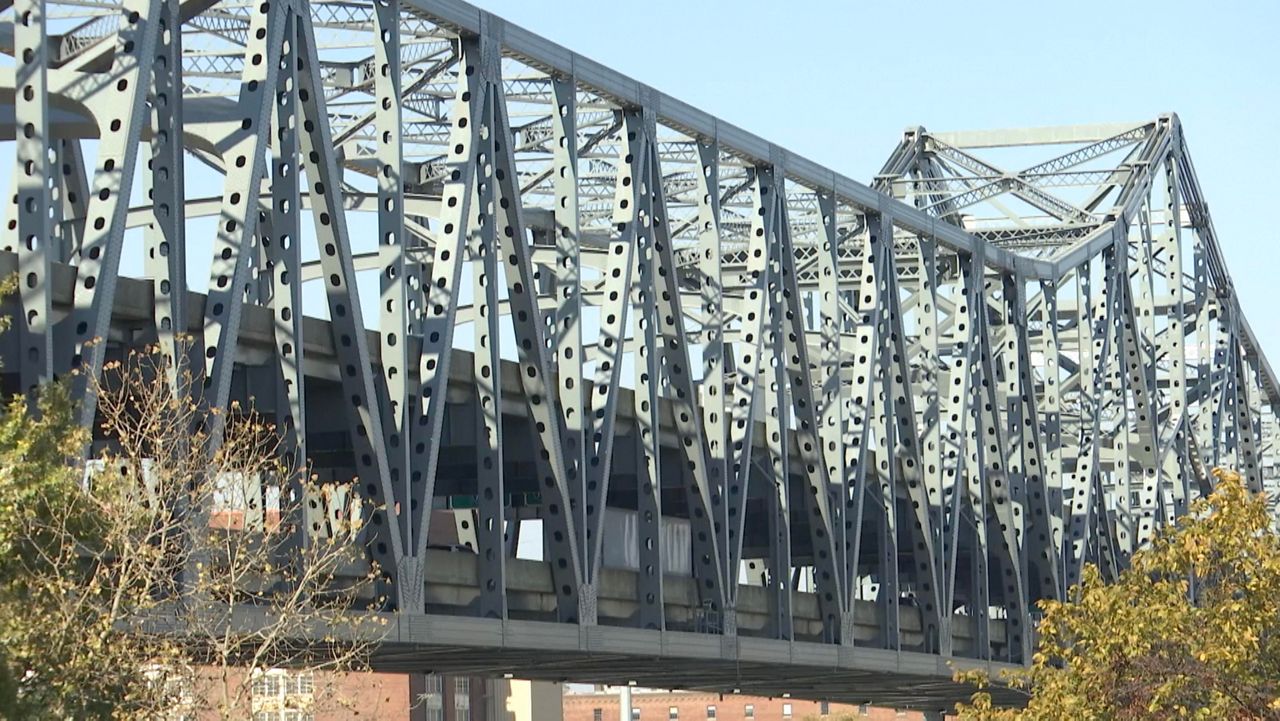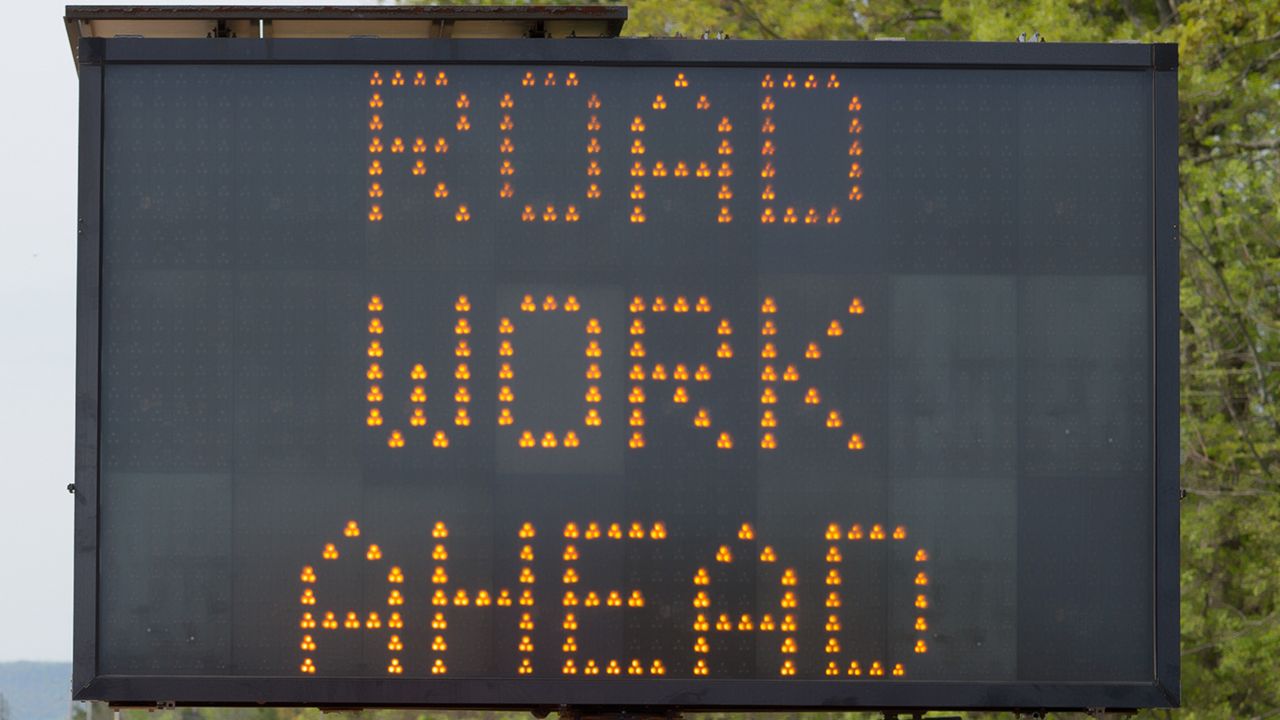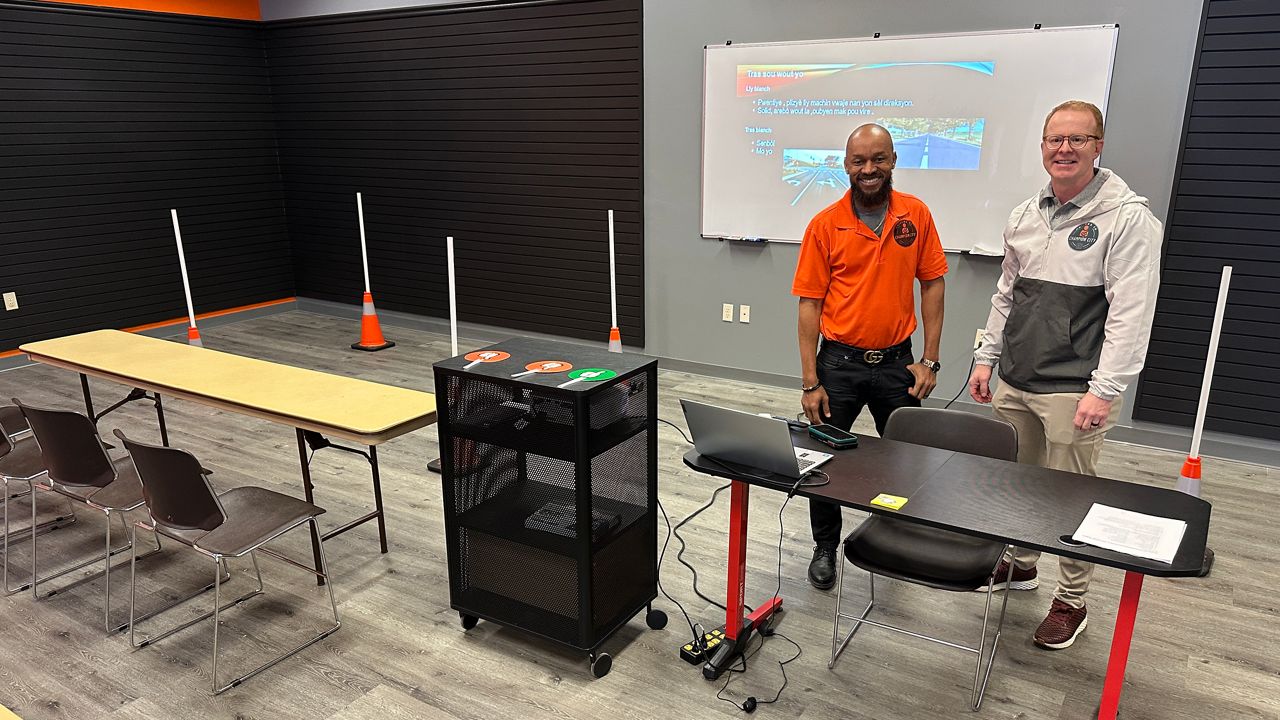CINCINNATI – Leaders in Kentucky and Ohio took a major step in making the long-planned and historically under funded Brent Spence Bridge project a reality.
What You Need To Know
- Ohio and Kentucky submitted a joint application for nearly $2 billion in federal funds for the Brent Spence Bridge project
- The Brent Spence Bridge is one of the most important but congested trucking corridors in the country
- The project aims to break up congestion by creating a companion bridge
- The project would be funded "50/50" with the states taking care of projects on their respective sides of the river
On Tuesday, Ohio Gov. Mike DeWine and Kentucky Gov. Andy Beshear announced a joint submission of an application requesting nearly $2 billion in federal funding to make improvements to the Brent Spence Bridge Corridor that runs through Northern Kentucky and Cincinnati.
The project has been talked about for two decades, but there wasn’t the needed federal funding to make it a feasible possibility. That narrative changed last year when Congress passed the $1.2 trillion Bipartisan Infrastructure Law, which will send unprecedented funds for transportation-related needs to communities across the United States.
The governors of Kentucky and Ohio came together in February to sign a formal memorandum of understanding (MOU) in terms of the project and expectations for the two states. They also voiced their opinion that the project would be doable with no tolls.
"The Brent Spence Bridge Corridor is a vital centerpiece to the interstate system of the United States, and we are optimistic that the federal government will recognize the importance of this project for both our national economy and national security," DeWine said in a statement.
"With the current supply chain crisis in our country, the issue of ensuring that this major transportation corridor stays open and moving has never been more urgent."
Ohio and Kentucky are seeking $1.66 billion in federal grant funding through the Multimodal Projects Discretionary Grant. The grant request is for about 60% of the remaining $2.77 billion needed to complete the project.
Each state will also allocate “significant state and other federal dollars” toward the project, per a release from DeWine’s office. The release goes on to say Ohio and Kentucky will split the cost of the new bridge “50/50,” and each state will be responsible for the needed work on its side of the Ohio River.
The Ohio Department of Transportation (ODOT) and the Kentucky Transportation Cabinet (KYTC) recently announced engineering work needed for the project will move forward during the application review process.
The state transportation departments will also continue to work on acquiring the property needed to construct the project and will begin meeting with companies interested in working on this historic bridge project.
Beshear called the situation a “once-in-a-generation opportunity” to improve the bridge, which millions of people rely on every year to get to work or school or travel.
The bridge is also a crucial linchpin to the Interstate 75 trade corridor between Michigan and Florida, and was once the busiest trucking route in the country.
Trucks carry nearly 43 million tons of goods across it every year. To this day, the bridge carries an estimated 3% of the nation’s gross domestic product annually.
“I pledged to fight for every available federal dollar and have a shovel-ready project once funding is secured,” he said. “The time is now to invest in transformative infrastructure that supports our growing workforce and safe travel along one of the nation’s most important commerce corridors.”
The Brent Spence Bridge carries more than 160,000 vehicles per day between Interstates 71 and 75 between Covington, Ky. and downtown Cincinnati. That’s currently more than twice the capacity it was designed to safely accommodate when it opened in 1963, according to ODOT.
For the second year in a row, the American Transportation Research Institute declared the I-71 and I-75 confluence at the Brent Spence Bridge the second-worst in the entire country.
Dubbed the “Brent Spence Bridge Corridor Project,” the plan calls for the construction of a companion bridge next to the existing bridge to improve traffic flow and safety. Improvements will also be made to the interstate network on either side of the bridges throughout an eight-mile corridor from the Western Hills Viaduct interchange in Ohio to Dixie Highway in Kentucky.
The goal is to create additional vehicle capacity to break up traffic congestion and once again open up the bridge as a freight corridor.
The issue is much bigger than just transportation, though.
Representatives from business, civic and community leaders have come together to ensure that the Brent Spence Bridge Corridor Project is successful.
Voices from business and civic sectors came together to voice support of the grant application. In total, more than 200 letters were sent in support of the project.
The project has drawn support from both sides of the aisle. Both of Ohio’s U.S. Senators – Sen. Rob Portman (Republican) and Sen. Sherrod Brown (Democrat) — applauded Ohio and Kentucky for working together to move the project forward. Kentucky's Senators — Sens. Mitch McConnell (Republican) and Rand Paul (Republican) — did so as well.
There were also at least nine members of the House of Representatives representing both states who vocalized their support for the project, as well.
The City of Cincinnati’s mayor, Aftab Pureval, has also vocalized strong support for the project, saying it has the potential to “improve both quality of life and equitable access to employment hubs” for people in both states.
While most regional leaders have long sought a solution for the Brent Spence Bridge problems, leaders in Covington have tempered that optimism in recent years. While they wanted a solution to traffic problems, they feared the situation as planned could be harmful to some riverfront cities and neighborhoods. Concerns ranged from the size of the span to economic impacts for small businesses.
In February, Beshear specifically addressed Covington in his remarks, saying, “We will continue to look for opportunities to reduce costs and the footprint of the project and to engage our communities. Mayor Meyer, I wanted to say that punctually – to engage our local communities.”
Following the signing of MOU, Covington Mayor Joe Meyer said he felt reassured that Beshear, DeWine and the project team seemed open to continued engagement in the process.
Overall, Meyer was “thrilled” with the announcement, calling it an overall “huge win” for the region, especially since officials are saying they won’t need to include tolls.
“The City of Covington is proud to be part of the regional coalition that supports this critical project locally, regionally, and nationally, Meyer said Tuesday. “We fully support this funding request and look forward to the successful completion of the Brent Spence Bridge Corridor Project.”
Editor's Note: The story has been amended to reflect Kentucky senators also support the bill. May 24, 2022









